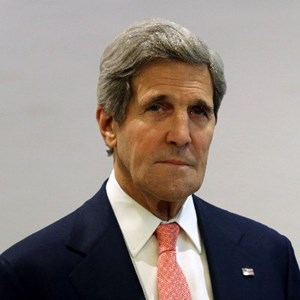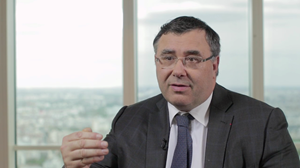CERAWeek conference starts with welcome remarks and leadership dialogue
The CERAWeek by S&P Global conference started its week-long stay in Houston on Monday (March 7) with a number of high-profile executive plenary sessions and “leadership dialogues.”
First up was a discussion between S&P Global Vice Chairman Daniel Yergin and U.S. Special Presidential Envoy for Climate John Kerry, who outlined a strategy for the energy transition and the challenges of achieving a meaningful reduction in GHG emissions in the near future. “We have determined that 20 countries account for 80% of total global emissions,” Kerry emphasized. “However, we require a 45% reduction in GHG emissions over the next eight years to achieve the 1.5° target goal.”
Although not specifically stated, Kerry suggested that these countries are falling short of achieving this goal by a significant margin. The key to achieving the goal is to focus on reducing the cost, while increasing the volume of blue and green hydrogen production, supplementing the capacity and longevity of battery storage capabilities, and implementing CCUS initiatives.
Kerry continued, saying we must make “green” products better than previous offerings to induce a change of mindset and influence buying patterns. He gave an example where end-users have realized that cement produced by a green process is superior to product delivered by a traditional method. Kerry ended the session by saying that natural gas is key to facilitating the energy transition and that increases in nuclear energy production are underway in the U.S., and that France has plans to double its nuclear output over the next several years.
Leadership dialogue I. Next, ExxonMobil Chairman and CEO Darren Woods declared his company will focus on meeting the world’s energy requirements, reducing GHG emissions while facilitating the energy transition, mostly as a traditional oil and gas producer. Woods stated that advancements in the Permian will enable XoM to achieve net-zero by the end of the decade, but additional technologies are required in CCUS, hydrogen and biofuel production, which XoM intends to develop, rather than wind or solar.
To increase oil production in the Permian, XoM is going to use a manufacturing approach to drilling and completions to maximize production and minimize costs. Woods reminded the audience that it’s the combustion of hydrocarbons that creates the issue, not the process of extraction. However, ExxonMobil intends to use electricity at every possible juncture in the drilling and completion process to reduce its carbon footprint, while improving and developing its CCUS capabilities and technologies to reach net-zero.
Woods also gave an update on the company’s Low Carbon Business Solution that is concentrating on producing blue/green hydrogen, CCUS and biofuels as alternatives to hydrocarbon-produced energy. The mission of the new business unit is to lower the cost of reducing emissions and create a balance between traditional oil and gas operations and carbon-reducing initiatives. LNG production and export also will be a foundation for lowering GHG output by reducing the use of coal for electricity production.
In addition, Woods said, “to help facilitate the energy transfer, government officials should provide a stable regulatory platform, so industry can invest and develop long-term solutions without the fear of elected officials picking one technology over another. He concluded by saying “that better collaboration between government and industry is required to achieve the aggressive target of GHG reduction goals, especially considering the extremely challenging political environment created by the Russian / Ukraine war and the lingering effects of Covid-19.”
Leadership dialogue II. The morning session continued with a conversation between TotalEnergies Chairman and CEO Patrick Pouyanné and S&P Global Vice Chairman Dan Yergin. As would be expected, Pouyanné showed considerable concern about the Russian / Ukraine conflict, and the impact and consequences the aggression will have on Europe’s energy future. TotalEnergies’ response is mixed, due to France’s (et.al) dependency on Russian oil and gas.
“There will be no further investment in Russian oil and gas, however TotalEnergies will not sanction Russian natural gas,” explained Pouyanné. Yergin then asked about the company’s name change. Pouyanné said, “we are going to align the company with several new initiatives.” Going forward, Total will be an electric and renewable energy company, focused on growing electricity supply.”
Although no timeframe was given on the speed of the transition, the company’s 2022 budget includes a $3 billion spend on natural gas production, with another $3 billion invested in renewables. Yergin asked how TotalEnergies would invest globally? Pouyanné indicated that LNG and renewables would be the core investment in the U.S., with offshore activity focused on Brazil and Africa. “We don’t see any prospects for giant field discoveries in the U.S. Gulf of Mexico, so we are looking elsewhere,” Pouyanné concluded.





